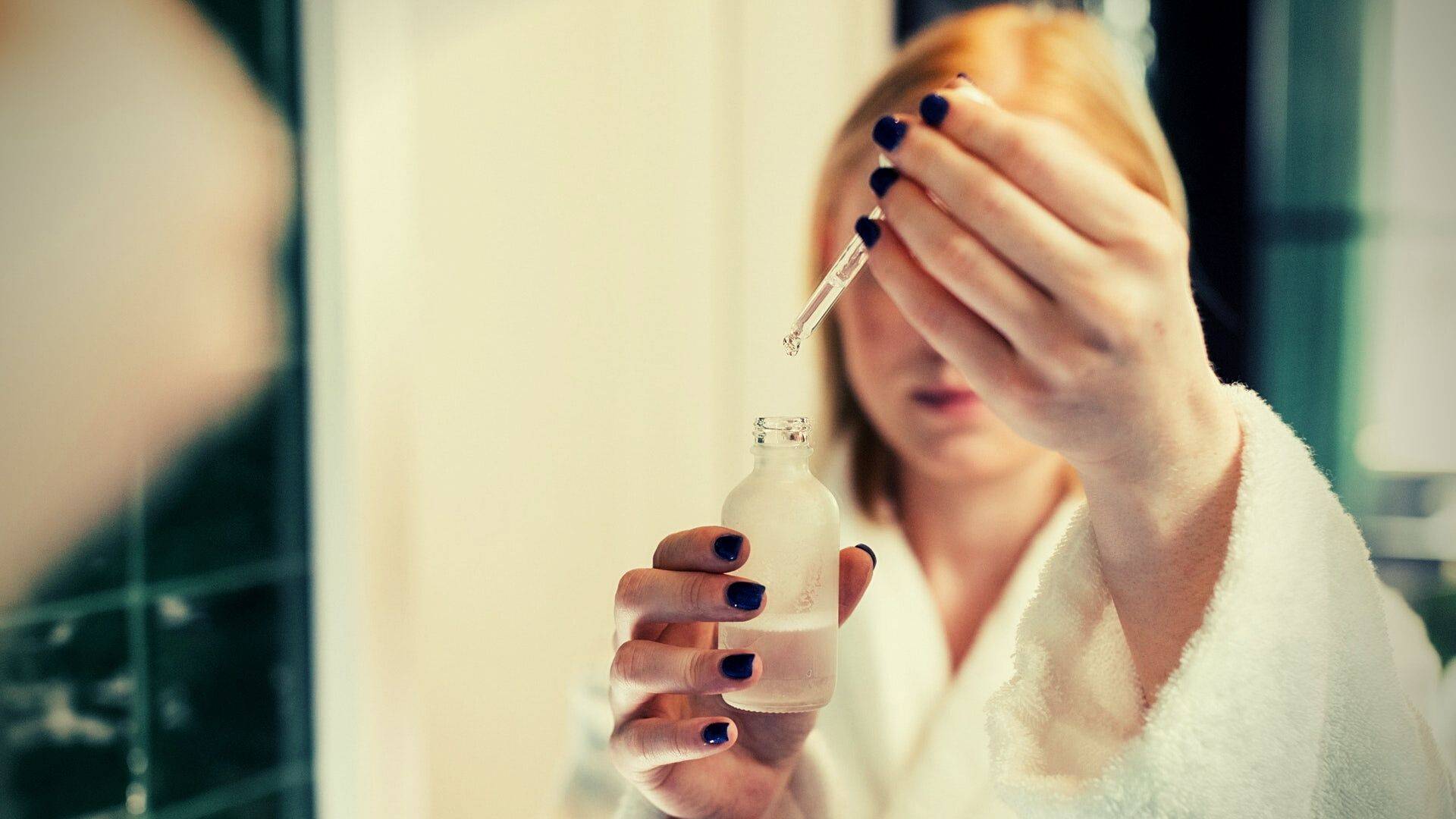Stem Cell Breast Augmentation:
Better Than Implants?
Stem Cell Breast Augmentation:
Better Than Implants?
For decades, going under the knife to get bigger breasts meant only one thing—you’re getting implants. Now, stem cell breast augmentation is growing in popularity as a safer and more reliable option.
Instead of just buying into the hype though, learn as much as possible about this procedure. After all, having work done on your bust is something that you should definitely think through.
To overcome dilemma, stem cells were added into the mix. With their capacity to develop into either breast tissue or fat, they allow for better integration and may enhance graft survival.
To overcome dilemma, stem cells were added into the mix. With their capacity to develop into either breast tissue or fat, they allow for better integration and may enhance graft survival.
PHYTOESTROGENS GROCERY LIST
PHYTOESTROGENS GROCERY LIST
Table of Contents
- 1. NATURAL VASODILATORS GROCERY LIST
- 2. Why Natural Vasodilators?
- 3. Blood Flow Supporting Foods
- Cayenne Pepper and Chili
- Citrus Fruits
- Dark Chocolate and Raw Caca
- Ginger
- Black Ginger
- Garlic
- Watermelon
- Tea
- Pomegranate
- Walnuts, Pistachios, Peanuts and Most Other Nuts
- Red Wine and Grapes
- Beetroot
- Spinach
- Raw Honey
- Kale
- Shrimp
What’s Stem Cell Breast Augmentation All About?
What’s Stem Cell Breast Augmentation All About?
To begin with, let’s talk about the procedure itself. It starts with the doctor putting you on either local or general anesthesia, and afterwards having fat extracted from you through liposuction.
If you’re worried about the incisions that will have to be made, well, this will only require small ones—usually around four millimeters in diameter. Once enough fat has been harvested, a small amount is then sent for processing.
Processing, in this case, means putting the fat in a centrifuge and separating the stem cells from other components (e.g., fat and plasma). The stem cells are then mixed with the rest of the fat.
This resulting combination will then be injected into the breasts—no further incisions need to be made. This final step is done in a slow, gradual manner to ensure that everything gets distributed evenly.
That’s basically it. As you can see, this cell-assisted approach to breast augmentation is minimally invasive, leaving no unsightly marks on the breasts themselves.
Until Special Offer Expires
100% Money Back Guarantee
Why Bother With Stem Cells?
Why Bother With Stem Cells?
You’re probably thinking that transferring fat from one place to another isn’t entirely new—and you’re right about that. Autologous fat grafting, as experts call it, has been around for quite some time.
Truth is told however, it’s far from perfect, with low fat graft survival in particular being a major issue. This refers to the problem with the fat’s weight and volume dropping significantly within a couple of years.
In other words, the increase that is initially achieved will be far from what you’llhave in the end. And of course, that decrease in size might in turn cause imperfections and other unwanted changes in how the breasts look.
To overcome that dilemma, stem cells were added into the mix. With their capacity to develop into either breast tissue or fat, they allow for better integration and may enhance graft survival.
While there will still be a decrease in overall breast volume three months after the procedure, not much should change afterwards—though that’s the ideal outcome.
This procedure is still rather new and so; many of its problems and limitations are yet to be uncovered. For example, there are fairly recent studies highlighting cases where graft survival didn’t improve at all.
Who’s the Ideal Candidate for Stem Cell Breast Augmentation?
Who’s The Ideal Candidate for Stem Cell Breast Augmentation?
Surely a few disappointing results won’t be enough to discourage you from getting bigger breasts this way. But unfortunately, eagerness isn’t the only thing you’ll need to qualify for cell-assisted breast augmentation.
Remember that fat will have to be harvested, meaning you need to have enough fat. And no, it can’t be just from any area either—the fat has to be derived from the abdomen or the thighs.
Also, if you have a lean body or your body mass index (BMI) is below 18.5, you’re immediately disqualified for this procedure. Around 100 to 400 cubic centimeters (cc) of fat are needed, which will be impossible to get from a body that’s too lean.
There’s another thing—the kind of fat matters too. If the fat you have easily gets used up with regular exercise or by following a proper diet, then you aren’t suited for the procedure.
It’s only the natural, non-excess fat that can be used. This, of course, means that anyone who’s currently on the higher end of the BMI range won’t qualify either.
Is It So Much Better Than Implants?
Is It So Much Better Than Implants?
With how “exclusive” it is, this approach to breast augmentation must be good, right? You’re probably thinking that it should at least be better than implants in every possible way.
Well, that isn’t necessarily the case, especially if you’re aiming for a massive increase in your bust size. Going the cell-assisted route means you’ll only be moving up around one cup size.
While some achieved improvements of two to three cup sizes, these are near-perfect cases with considerably high graft survival. And remember, there’s no standardized technique for this so results definitely tend to vary.
Even with those results however, it still pales in comparison to implants. Silicone implants, for example, can exceed the 500-cc mark—assuming that one cup size is approximately 150 cc, that’s at least three cup sizes already.
Saline-filled implants, on the other hand, can reach even greater volumes. The maximum for what’s commercially available is 960 cc, which translates to six cup sizes.
Interestingly, this kind of implants can be used to attain much higher volumes. By injecting additional saline solution, the implant itself can be inflated past its recommended size.
Why Is The Procedure Gaining Popularity Then?
Why Is The Procedure Gaining Popularity Then?
Clearly, stem cells aren’t for women looking to have the biggest improvements. But size isn’t the only thing you should be concerned about. There’s also the matter of feel.
Saline-filled implants are considered to have an unnatural feel. Their silicone counterparts fare better but not too well: they still can’t compete with actual breast tissue.
Now with the breasts being comprised of tissue and fat, and with stem cells and fat grafting merely adding to both, it’s no wonder that feel isn’t an issue with this newer procedure.
Aside from having the right feel though, cell-assisted breast augmentation eliminates the need for replacement. Saline and silicone implants are expected to last for up to 20 years, but many are removed way sooner.
Some surgeons deem it necessary to replace implants after a 10-year period, but there are those more than willing to wait until leaks, ruptures, or any other noticeable problems occur.
As you can imagine, in addition to being expensive, having implants replaced translates to lost time as you’ll have to go through pain and recovery again. It also means you’ll have to pay for the whole procedure once more, and that’s a good chunk of money.
But What Are The Risks Involved?
But What Are The Risks Involved?
So, stem cell breast augmentation is the better choice if you’re worried about feel or if you’re not too eager about implants due to the need for their eventual replacement. But surely, as with any other procedure, getting cell-assisted breast augmentation has its own risks.
Specifically, if you decide to undergo the procedure, you should be ready for the possibility of developing breast lumps, calcifications, and oil cysts. Though not dangerous on their own, these make cancer screening harder.
Simply put, if you get a mammogram and you do have nodules or lumps, your radiologist will find it difficult to know whether you’re dealing with abnormal growths or just the ill-effects of breast enhancement.
Unsurprisingly, those who do end up having such problems usually opt to undergo treatment. Lumps and cysts may be resolved through fine-needle aspiration or liposuction, while calcification requires periareolar incisions (small cuts around the nipple area).
Though far from complex, these procedures will still set you back financially and likewise, will require a brief period of recovery. And it can’t be denied that this is comparable to having implants replaced.
What’s Preparing for It Like?
What’s Preparing for It Like?
While some concerns occur after undergoing breast augmentation, there are those that may begin even as you prepare to go under the knife. This, in particular, stems from the need to use BRAVA—an external tissue expander.
You’ll be asked to wear the contraption for at least three weeks, and for up to 12 hours daily. This opens up the tissues, allowing for more space where stem cells and fat can be introduced.
The tissue expansion works like a pump and improves blood flow, which is key to the success of the procedure. With the grafted fat not having its own access to the blood vessels, they’ll be relying on what’s already circulating in the area.
This is likewise the reason why increases in size are so limited with cell-assisted breast augmentation, as graft survival greatly drops once the amount exceeds what can be supported by the existing blood flow.
Despite the BRAVA’s perks however, it’s still yet another technology in its infancy. Studies regarding its safety are still limited, with some highlighting risks like severe lesions, blisters, and other problems from skin damage.
And no, despite how the device looks, it won’t give you a breast lift. In fact, the procedure itself won’t provide that kind of perk either, meaning you’ll have to spend more if you do need a lift.
Is Recovery Going To Be A Hassle Too?
Is Recovery Going To Be A Hassle Too?
If recovery is your main concern, well, here’s some good news—unlike with more invasive treatments, stem cell breast augmentation only requires two to three days of rest. You’ll feel sore for about a week, but the pain should be manageable.
Of course, not all phytoestrogen-containing products are made equal. Those containing Pueraria mirifica, for example, are often superior due to the herb having at least 17 different phytoestrogens.
Of course, not all phytoestrogen-containing products are made equal. Those containing Pueraria mirifica, for example, are often superior due to the herb having at least 17 different phytoestrogens.
PUERARIA MIRIFICA
WHAT DOES THE RESEARCH SAY?
Are There Cheaper, Safer Alternatives?
Are There Cheaper, Safer Alternatives?
After knowing about all these things, are you still eager to go under the knife? If you’re having doubts and you want something more cost-effective and safer instead, you should probably consider trying phytoestrogens.
These plant-derived estrogen mimics are not only capable of supporting breast growth, but they also help keep the skin supple and hydrated—meaning they may give your boobs a bit of a lift.
Of course, not all phytoestrogen-containing products are made equal. Those containing Pueraria mirifica, for example, are often superior due to the herb having at least 17 different phytoestrogens.
Are you thinking of giving it a spin instead of going for stem cell breast augmentation? Here’s a suggestion—go for Mirifica Science’s serums as the modern option with the highest affordability, purity, and potency on the market.
All our products are research-backed. We spend countless hours reading through clinical
research to make sure our products do exactly what we say they will.
That's why we take responsibility for all the risk and guarantee you'll get results. If not, you're protected by an ironclad 60-day money-back
guarantee.
Simply put, if our products don't work for you, let us know and we'll refund you
everything. No questions asked.
ONLY THE BEST EARTH GROWN NUTRIENTS
*These statements have not been evaluated by the FDA. Products are not intended to diagnose, treat, cure or prevent any disease.
The information on this website has not been evaluated by the Food & Drug Administration or any other medical body. We do not aim to diagnose, treat, cure or prevent any illness or disease. Information is shared for educational purposes only. You must consult your doctor before acting on any content on this website, especially if you are pregnant, nursing, taking medication or have a medical condition.





